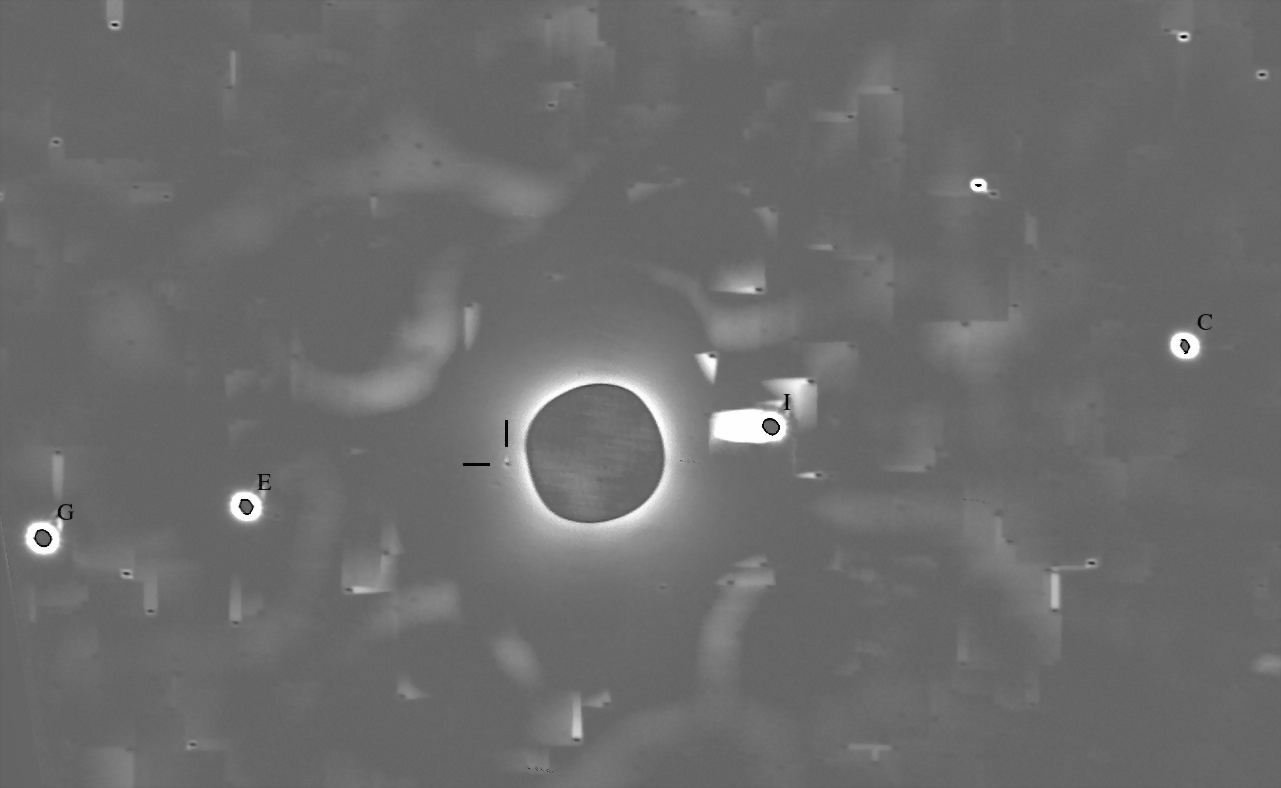This image is a place holder, to appear until I take a more conventional image of Io. The satellite is so bright that it is difficult for the main telescope and camera at Tacande to take an image of the satellite without it being greatly over-exposed. The true item of interest here is Amalthea, marked with the cross-lines, and described in greater detail in its own page. The position of Io is marked with an I.

Io, like Europa, Ganymede and Callisto, was definitely observed by Galileo Galilei who published his observations in 1610. It is quite possible that it was seen much earlier in history as it would be easily visible to the naked eye (and some keen-sighted observers claim to have seen it and its companions) if it were not always so close to the much brighter Jupiter, Nonetheless, it is known as one of the Galilean satellites in his honour.
| Date and time of observation | 2020-09-03 21:50 UT |
| Telescope | 0.4m f/6.5 Dilworth-Relay |
| Camera | Starlight Xpress Trius-PRO SX814 CCD |
| Filter | None |
| Exposure | 630s in 21 x 30s subs. Median stacked on mean motion of Amalthea. |
| Centre of image | RA 15h15m00.4s Dec -22°44'31" |
| Image dimensions | 13.0 arcmin × 7.6 arcmin |